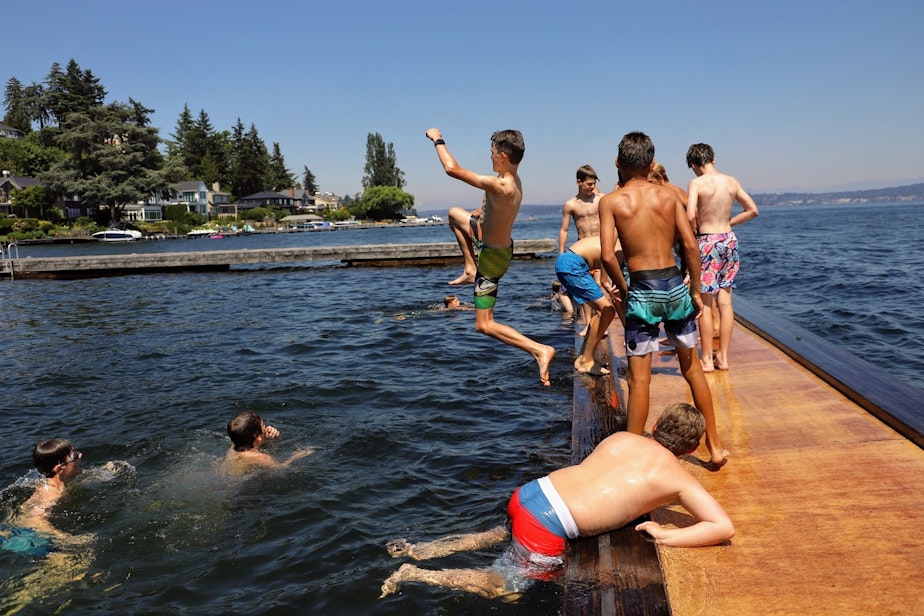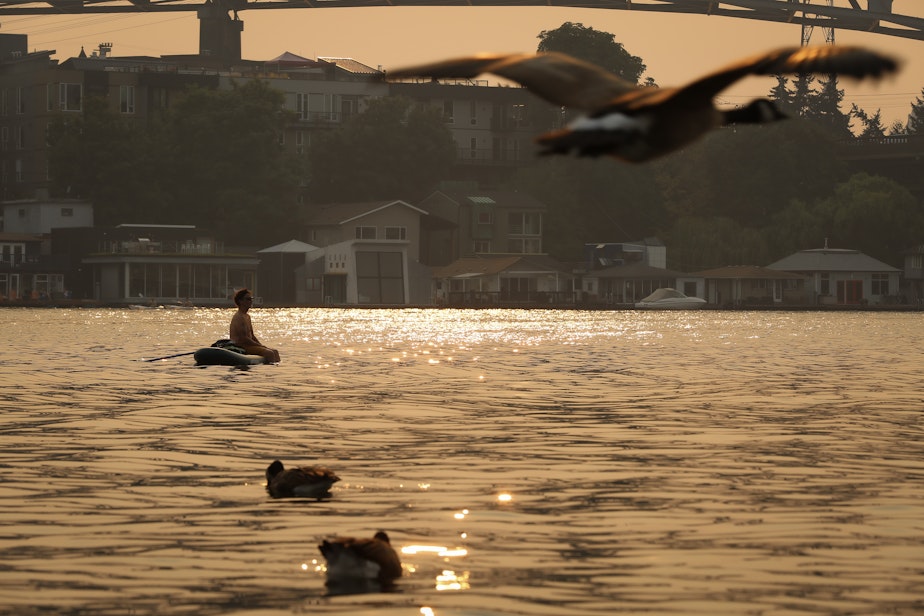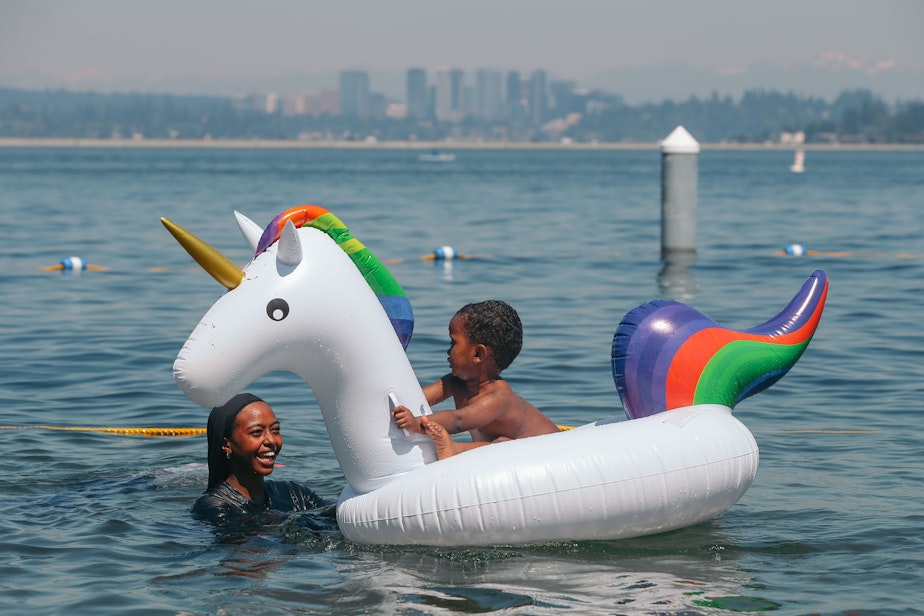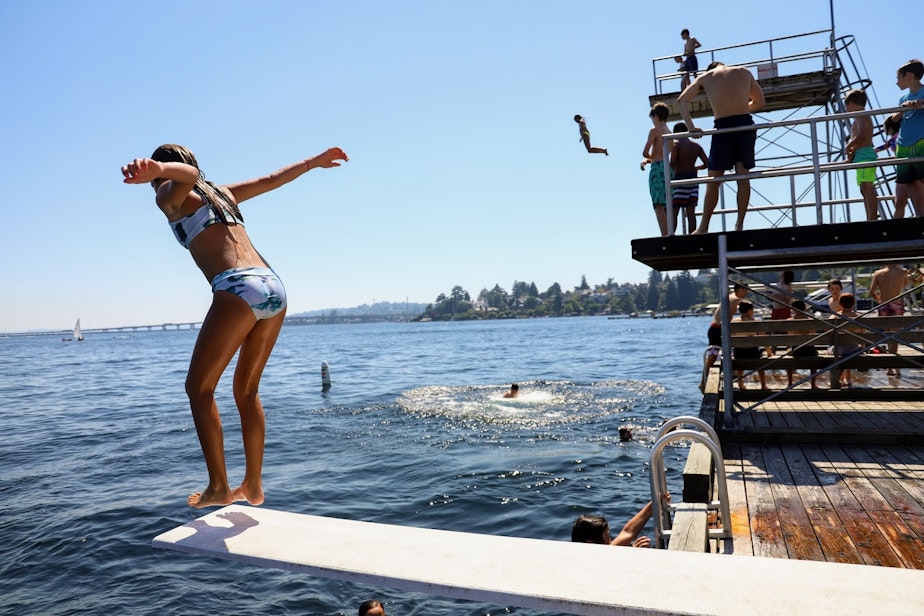Not-so-fresh water: How to avoid getting poop-sick from Seattle lakes

With the sun blazing and temperatures expected to climb into the low 80s Friday, Seattleites will be eying area lakes and swimming beaches for relief from the heat.
But before you take the plunge, consider several factors that could prevent you or your furry friends (and pets) from getting sick or worse from bacteria and toxic algae that could be lurking in your favorite swimming hole.
First and foremost: The air gets hot in the Pacific Northwest a lot faster than the water, and that applies to both saltwater and freshwater sources. The temperature of water in Puget Sound on Thursday, according to satellite readings from NOAA, was just over 51 degrees, even though the sun was shining and outside temperatures closed in on 80 degrees.
RELATED: 8 mistakes to avoid if you're going out in the heat
In addition to cold water, the main dangers in Seattle area lakes and saltwater swimming areas are toxic algae and bacteria. KUOW reached out to King County Department of Natural Resources and Parks for tips on how to enjoy the water and avoid getting sick. This list was compiled with the help of three King County sources: Ecologist Daniel Nidzgorski, and water quality planners Wafa Tafesh and Rachael Gravon.
Tip No. 1 – Know before you go

The Washington Department of Ecology monitors the water at 52 high-use saltwater swimming beaches throughout the state and posts sample results from Memorial Day through Labor Day on a Beach Status map.
Meanwhile, King County conducts weekly tests from mid-May to mid-September for high bacteria levels and toxic algae at public swimming beaches on Lake Washington, Lake Sammamish, Green Lake and other popular spots. As of Thursday, the county listed three beaches with high bacteria counts — Enatai Beach, Houghton Beach and Andrews Bay Beach at Seward Park.
RELATED: How risky is it to swim in Washington lakes?
The county also measures water temperature at popular swimming spots and advises people to stay out of the water when the water is below 70 degrees.
Tip No. 2 – Recognize toxic algae

Not all algae is toxic. Toxins come from a specific type of algae — cyanobacteria, which is also known as blue-green algae. Cyanobacteria create specific molecules that can make people or pets sick and can even be fatal to pets.
Here is a link to photos that show what toxic algae blooms look like.
You can also test the algae by dipping a stick or paddle into the water. If it comes up looking like it’s coated in greenish paint, it’s probably cyanobacteria, and therefore toxic. If the stick or paddle comes out of the water with hair-like strands or clumps, it’s more likely to be filamentous green algae, which does not produce toxins.
Tip No. 3 – Don't drink the water

Bacteria levels from fecal matter (aka poop from warm-blooded animals) are most often a problem when people swallow lake water, or get it in their eyes, nose, or lungs.
Avoid swimming or wading in water that has high bacteria levels and avoid drinking the water. The main source of bacteria in the water is not from humans or pets, but from geese and other wildlife.
So if your favorite swimming spot has a lot of geese, you might want to think about swimming elsewhere.
Don’t feed geese and ducks. It just attracts them to swimming areas and increases the likelihood of more poop in the water and higher bacteria levels.
Tip No. 4 – Protect children from bacteria and toxins

Children are more susceptible to water-borne toxins and bacteria because they tend to spend more time in the water, swallow more water, and have smaller body masses.
In addition, their immune systems generally aren’t as strong as adults'.
Elderly people and those who are immunocompromised are also at greater risk and should be especially wary about their exposure to water-borne toxins and bacteria.
Tip No. 5 – Avoid swimmer’s itch

Even when there’s no poop or toxic algae in a body of water, it can still carry the parasite that causes swimmer’s itch. The parasite emerges from snails in the lake and can burrow into people’s skin and cause an allergic reaction.
People can protect themselves from swimmer’s itch by putting on waterproof sunscreen before they enter the water and then toweling off immediately after swimming. More tips on avoiding swimmer’s itch are available from Public Health – Seattle & King County.
Tip No. 6 – Enjoy the water safely

King County has new signs this year that stage clearly when bacteria levels are high that say, “Stay out of the water.” For toxic algae, the county uses signs developed by the Washington Department of Health.
Don't let these tips dissuade you, however. Swimming is great exercise and getting in the water is a great way to cool down when outside temperatures heat up. County officials point out that in the past five years, most beaches have had consistently good water quality (at least 95% of the time) during swimming season.
So, pick your spot, check the status online, and dive into the cool waters of the Pacific Northwest during what (we hope) promises to be a long, hot summer.




